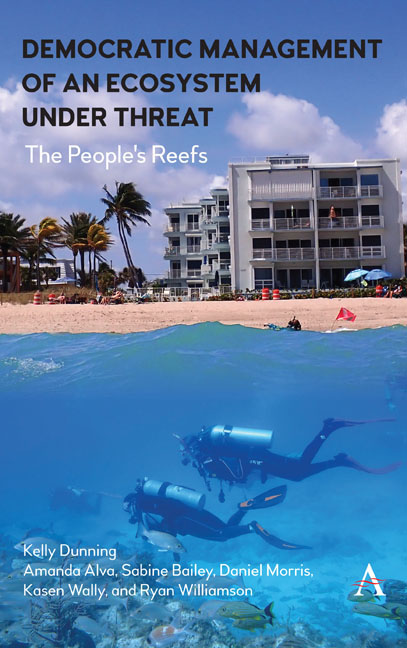Book contents
- Frontmatter
- Contents
- Miscellaneous Frontmatter
- Part 1 The Climate Change Challenge to Coral Reefs That Will Require Conservation Theory And Practice to Evolve
- Part 2 Case Studies
- Part 3 Summary and Conclusions
- Appendix Chapter 5
- Appendix Chapter 6
- Appendix Chapter 7
- Appendix Chapter 8
- Appendix Chapter 9
- Index
Chapter 6 - How Communities are Organizing to Contest Major Infrastructure Projects That May Damage Coral Reefs: The Port Of Miami Case
Published online by Cambridge University Press: 28 February 2024
- Frontmatter
- Contents
- Miscellaneous Frontmatter
- Part 1 The Climate Change Challenge to Coral Reefs That Will Require Conservation Theory And Practice to Evolve
- Part 2 Case Studies
- Part 3 Summary and Conclusions
- Appendix Chapter 5
- Appendix Chapter 6
- Appendix Chapter 7
- Appendix Chapter 8
- Appendix Chapter 9
- Index
Summary
Imagine the hustle and bustle of downtown Miami, teeming with live music, filled with flavors of Latin American cuisine, aromas of Cuban coffee and tourists and locals alike enjoying miles of pristine white-sand beaches. A short distance to the south, lies the Biscayne Bay, which is home to several listed species under the most important wildlife conservation policy on the books, the Endangered Species Act, including manatees, crocodiles, several sea turtle species, small-tooth sawfish and staghorn coral (Acropora cervicornis). Just a couple miles down the road on U.S. Route 1, the heart of the coral reefs of South Florida, or the Florida Reef Tract can be found where it stretches 300 miles south to the Dry Tortugas National Park, making it the third largest barrier in the world. To the west of Miami, we find Everglades National Park, which is a designated World Heritage site with one of the most unique wetland ecosystems in the world. Everglades National Park is also one of the wettest regions in the United States, with many of its waterways finding their final destination in the Biscayne Bay, and ultimately into the Florida Reef Tract ecosystem, showing the interconnectedness of all of these South Florida ecosystems. These tropical coastal seascape ecosystems are characterized by seven connected ecosystems that include coastal strand, mangroves, seagrass beds, coral reefs, hard-bottom habitat, silt-bottom habitat and rocky-bottom habitat. Right in the middle of this mosaic of ecosystems lies the Port of Miami, nicknamed the “Gateway to the Americas” and “Cruise Capital of the World.” In this chapter we explore how major infrastructure projects may degrade delicate and imperiled coastal ecosystems despite strict federal, state and local laws, and how people and interest groups are working to protect these ecosystems.
The Dredging History of the Port of Miami
To meet the demands of the burgeoning market, the Port of Miami has undergone many dredging projects to accommodate larger shipping vessels and cruise ships throughout its history. Beginning in 1990, Congress authorized the deepening of the Port to 42 feet, which was completed in 1993. Since then, every 10 to 15 years, another port expansion dredging project has been implemented.
- Type
- Chapter
- Information
- Democratic Management of an Ecosystem Under ThreatThe People's Reefs, pp. 85 - 112Publisher: Anthem PressPrint publication year: 2023

